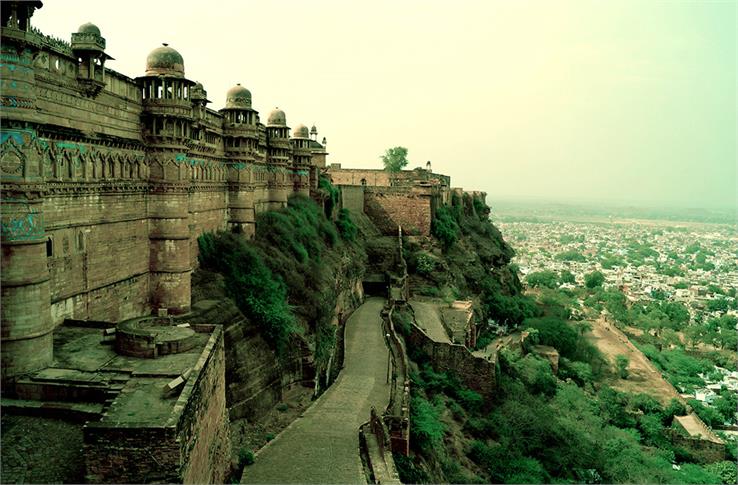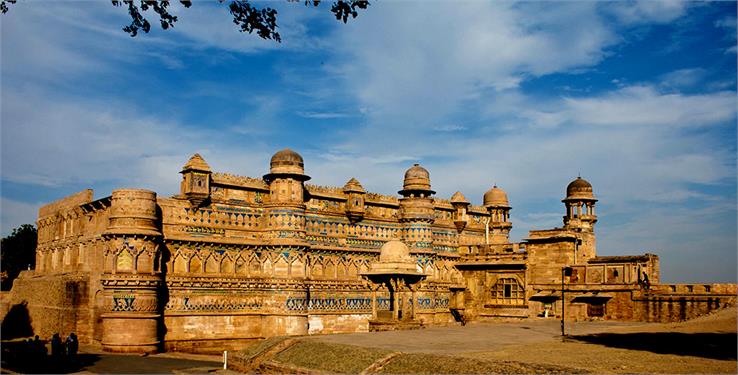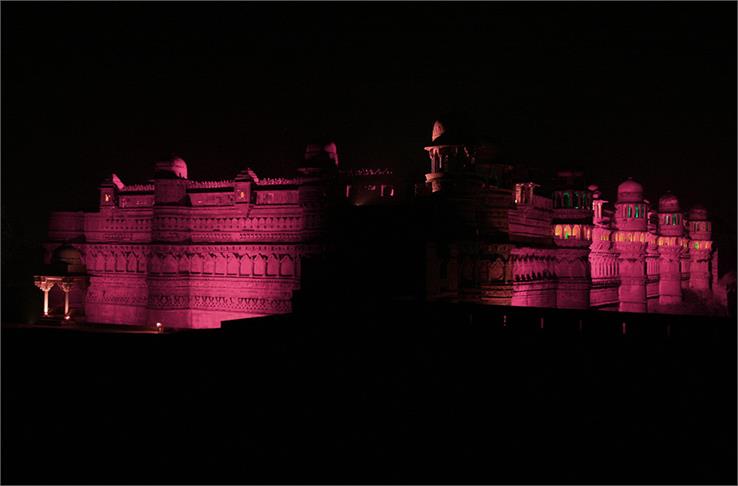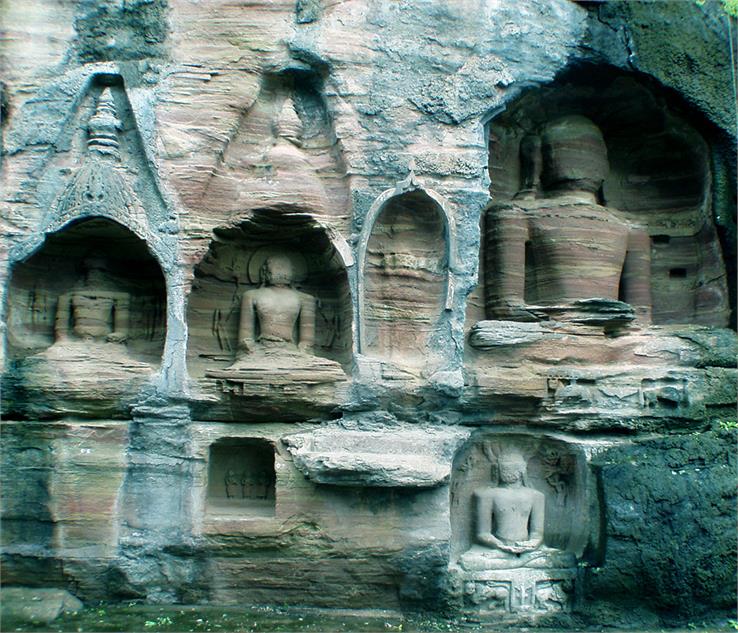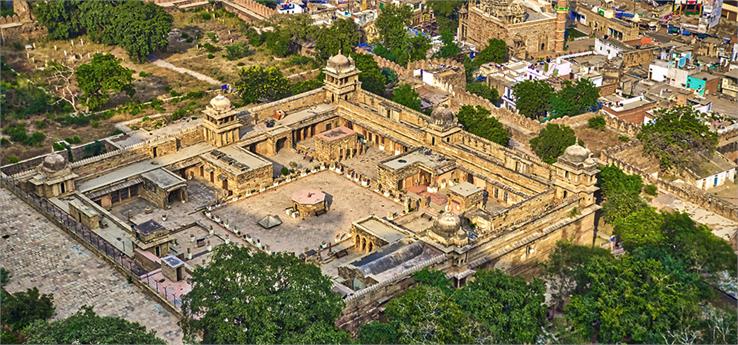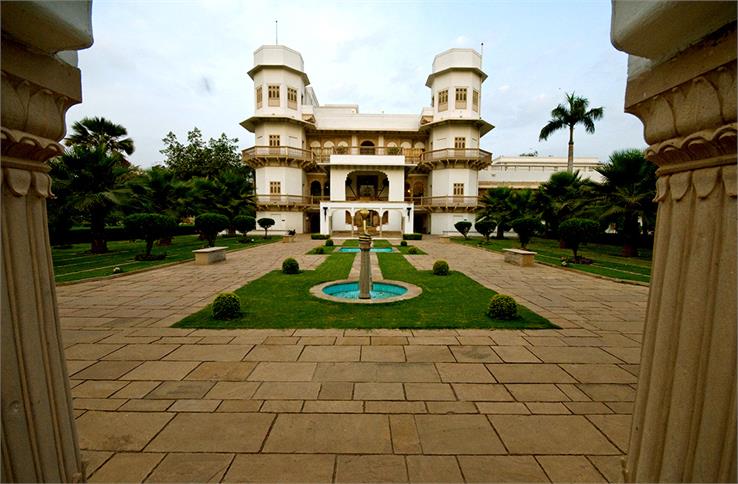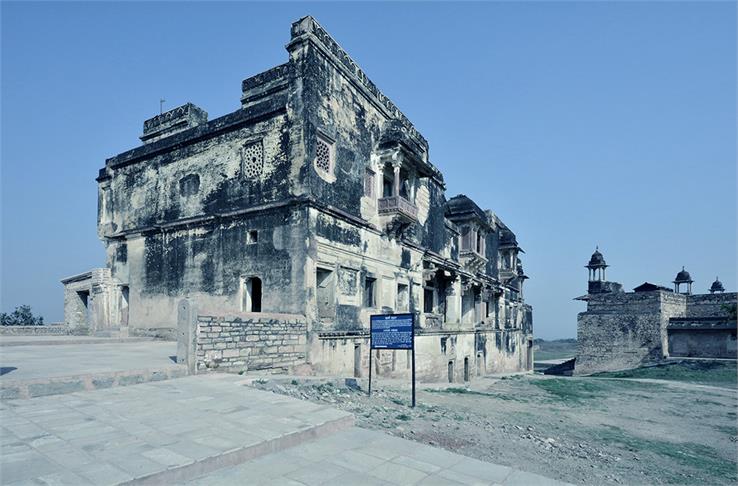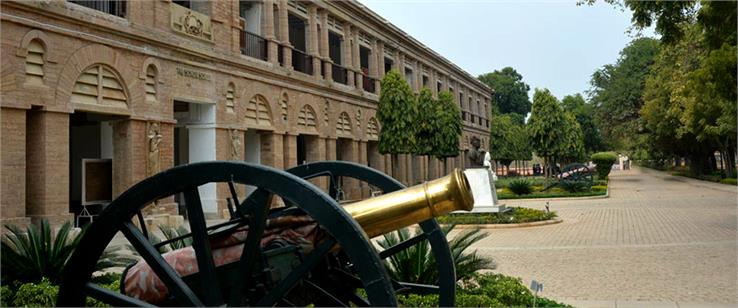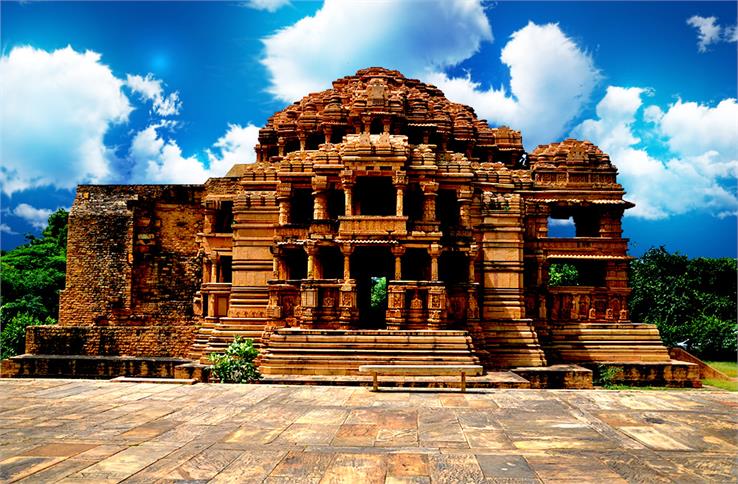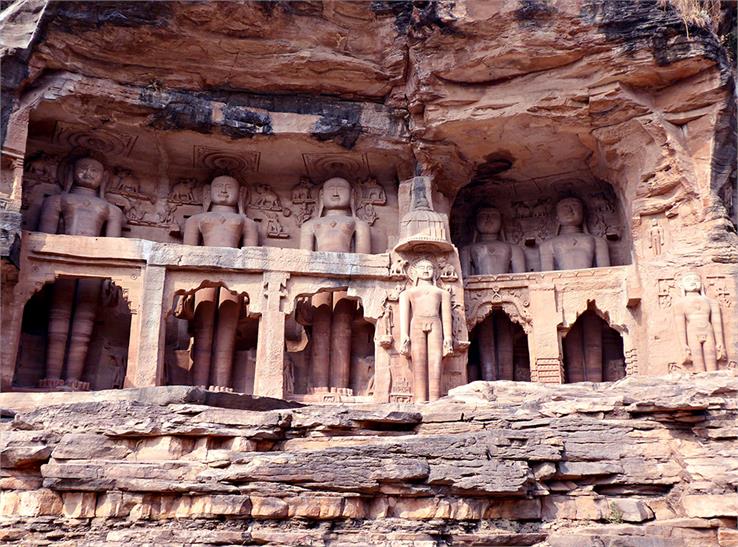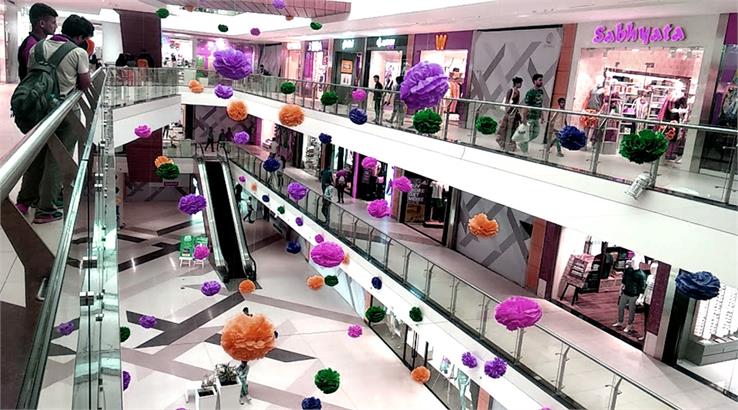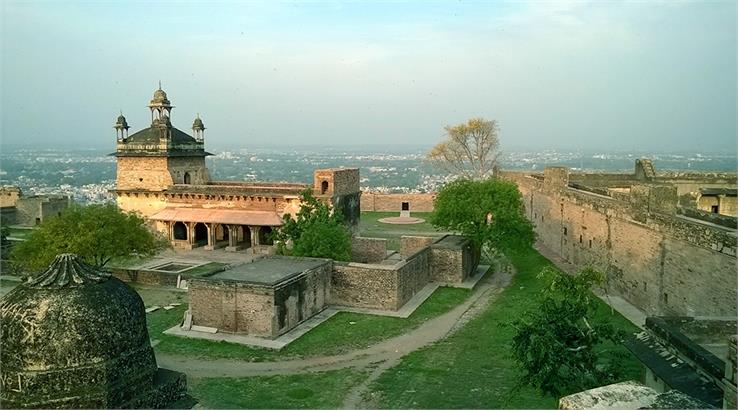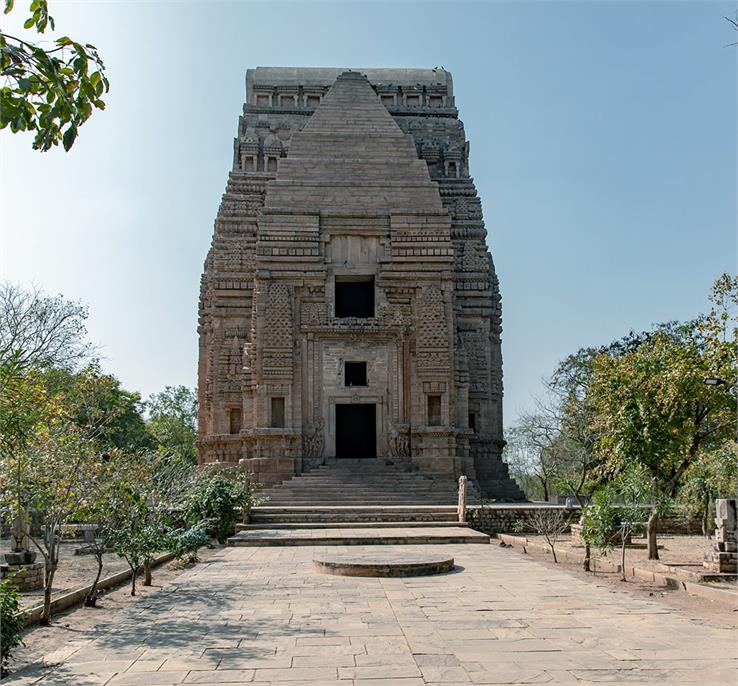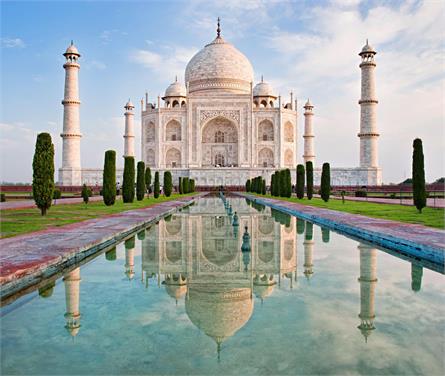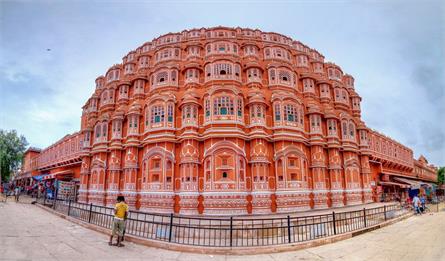Gwalior Fort - The Pearl Fortress
A magnificent city of forts and hills is Gwalior, where this ancient fort, The Gwalior Fort, is situated. The fort has reserved its glory and reputation till today. It is counted in one of India's most massive Forts with a huge old door, marsh domes, meticulous walls, and stood by the test of time by standing straight till now.
Timings and Entry Fee
|
Timings |
6:00 AM - 5:30 PM |
|
Open |
All days |
|
Time Required |
5-6 hours |
|
Entry Fee |
Indians: INR 75 per person Foreigners: INR 250 per person Kids (below 15 years): Free |
As per the archeological facts, it is not proved when correctly the fort was built. Still, some local saints say that it was made in the 8th Century by a local king, Suraj Sen. As per the local saint, the king was suffering from some severe disease that had no medication at that time. A saint, named Gwalipa was roaming around the fort and met the king, after seeing his condition the saint got water from a holy pond, which is now known as Suraj Kund and is inside the fort premises, which healed the king and made him healthy. However, the king named the fort and the entire city after the saint's name as a token of regard. There are more fun facts about this fort other than this exciting tale.
Let's know them!

- Over these years, the fort was seized and captured by a lot of emperors - the Huns, Akbar, Qutub-ud-din Aibak, Tomars, Marathas, and Jats. There was a time when this fort was regarded as central India's unconquerable fortress.
- If we talk about the Sikh history, the sixth guru, Guru Hargobind Singh Ji, was convicted at the time of the emperor by Jahangir in the fort with 52 other kings, he also helped the other kings to get released from prison. This day is celebrated as Bandi Chhor Divas (Day of liberation) by Sikhs.
- There is a gurdwara built after the guru, inside the fort premises named 'Data Bandi Chhor.'
- Nevertheless, around the 19th century, the city and the fort became a matter of acrimony between the British and the Scindias.
Gwalior Fort Light and Sound Show

There is an absolutely mesmerizing sound and light show introduced by the Gwalior Fort, every evening. The show exhibits the royal love story of Raja Man Singh and his queen Mrignayani which is no less than any fairytale. This show should not be missed which is hosted in the amphitheater at the Man Mandir. The timings are as follows:
Hindi Show: 7:30 PM
English Show: 8:30 PM
Inside the Enormous and Magnificent fort
The Gwalior fort has a lot of major attractions within it, which are built by the different rulers over time.
Man Singh Palace

Beginning with a palace built by Raja Man Singh Tomar during his rule, named Man Singh Palace. This royal palace has its own beauty. Its vibrant tilework outside has yellow ducks and mosaics of several animals in different colors. This palace is the only unharmed pre-Mughal palace of India.
Karan Mahal

The other majestic fort, which is Karan Mahal, was built by another king of the Tomar Dynasty, named, Kriti Singh. It has alluring sculptures all over, although this palace is turned into an archeological museum.
Gujari Mahal

Gujari Mahal was also built by Raja Man Sigh Tomar for his wife, Mrignayani, who was a Gujar princess and was named after her. The queen asked for a private palace for herself, which led to the construction of the royal Gujari mahal. This palace is also now a museum that has antiques, artifacts, and sculptures of Hindu and Jain gods back in the time, first and second centuries B.C.
Vikram mahal

This palace was Originally a lord shiva mandir, as the king of the Tomar Dynasty was a devotee of Lord shiva. His name was Vikramaditya Singh. The castle was partially destroyed by the Mughal emperors during their reign but was refurbished later.
Temples are one of the attractions at the fort
Siddhachal Jain Temple Caves

There are a number of statues of Jain Tirthankaras that are engraved on the enormous rocks and inside the caves. It is said to be engraved in the period of the 7th to 15th centuries. The tallest statue amongst all is Rishabhanatha or Adinatha, which is approximately 58 feet tall. Suparshvanatha idol is known to be the second tallest idol with a height of 35 feet.
Gopachal Hill

Deity's statue on the Gopachal Hill - The Gopachal Hill is a house to more than 1500 figures. Most of them are engraved on rocks. These idols were engraved within the rule of two kings of the Tomar Dynasty, named Keerti Singh and Dungar Singh. One of the statues, which is 42 feet (height) and 30 feet (width), is of a Hindu lord Bhagwan Parshwanath. A lot of such idols were destroyed by the Mughal Rulers when they took over the fort.
Teli-ka-Mandir

Here is the most eminent temple amongst all the temples in the Gwalior Fort, Teli ka mandir. It is famous for its beautifully carved exterior, which is built in the Dravidian architectural style. It is counted as the oldest part of the fort, which also has Buddhist architecture. Originally, Lord Vishnu was the deity of the temple; now lord shiva is the main deity.
Sas-bahu Temple

Interestingly, this temple has a short tail behind it. This temple was made by the king of the Kachchhapaghata dynasty, King Mahipal. He built the temple as his wife was a great devotee of Lord Vishnu and the daughter in law was an ardent worshipper of Lord Shiva. Therefore, this temple is named as Sas-Bahu temple. Here both lord Shiva and lord Vishnu are worshipped as these are two pillared like structured temples which stand next to each other.
Scindia School

The School was built by King Madho Rao Scindia. The school was entirely dedicated to the prince and princesses of the Scindia family of the Hindu and Maratha Dynasty. In the year 1897, after they won a battle against Britishers and the fort was handed over to them by the Britishers.
Gwalior Fort has been in possession of many different rulers. The fort was used by the Mughal emperor as a prison during their rule. It is said to be the prison for royal people. Like, Akbar's brother was imprisoned here and Aurangzeb’s brother was also kept here. The Gwalior Fort saw many changes as the rulers changed, in terms of interior and exterior designs.
At the time of the Rebellion of 1857, the Queen of Jhansi - Rani Lakshmi Bai reached the Gwalior fort and looked for shelter inside the fort, while fighting with the British army. Also, she took her last breath here. To honor her bravery, there is a big statue of Rani Lakshmi bai at the spot where she lost her life - Phul Bagh. Also, there are some places in the city named after her.
If you plan to go - The great Musician, Tansen was born in Gwalior and used to visit the fort regularly for 'riyaz.' As a token of homage to Tansen, Tansen Sangeet Samaroh (Tansen Music Festival) is hosted by Gwalior in December every year. Since December is the best time to visit the city, do not miss this festival as it is a four days event organized at the Tansen Tomb. All the musicians across the country are gathered to be amused by the fest. If you are a classical music lover, it is a must-go for you!
Shop Your Heart Out in Gwalior

You can shop the best of the traditional of Madhya Pradesh as a Souvenir. If you are an art and craft lover, you will get the best of Wall hangings, handwoven carpets, lacquerware, dolls, and jewelry in Patankar Bazaar and near Lashkar. Maheshwari and Chanderi sarees, leatherware, and metalcraft are also going to snatch your attention.
You may end up buying more than what you planned for!
Royal Stay in Gwalior

Pamper yourself in the city of imperials. Royal Hotels like Gwalior Regency, Taj Usha Kiran Palace, and Hotel Aditya. Luxuriously decorated rooms, free WiFi, outdoor pools, spas, on-site restaurants, car rentals, and currency exchange are some of the many services available.
Best Time To Visit Gwalior fort
Autumn and Spring season are the best time to visit the Gwalior Fort that is between October and March. In addition, Monsoon is also a good time to enjoy verdant green surroundings and fresh air of the city.
How To Reach Gwalior Fort
There are two possible ways to reach the Fort:
- Take an auto-rickshaw till the Urvai Gate which is the western entrance of the fort.
- Hike up to the eastern entrance as no vehicle is allowed to go there.
Both the paths are steep treks to reach the main fort, but the stunning view of the striking fort will attract and make the trip whole worthwhile. Get a sight of beautiful rock sculptures on the western side.
Gwalior Fort is a true glory that represents the royal history of India, as referred to as 'the pearl amongst fortresses in India' by Mughal emperor Babur. Indeed, it is one of the most impenetrable forts in the country, which is a must-visit attraction of Central India.


